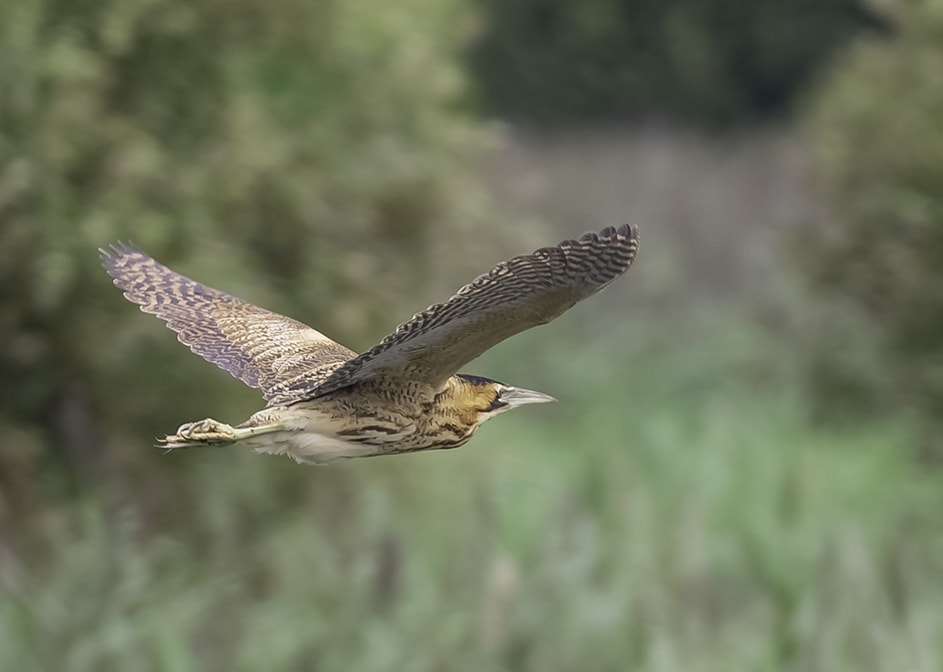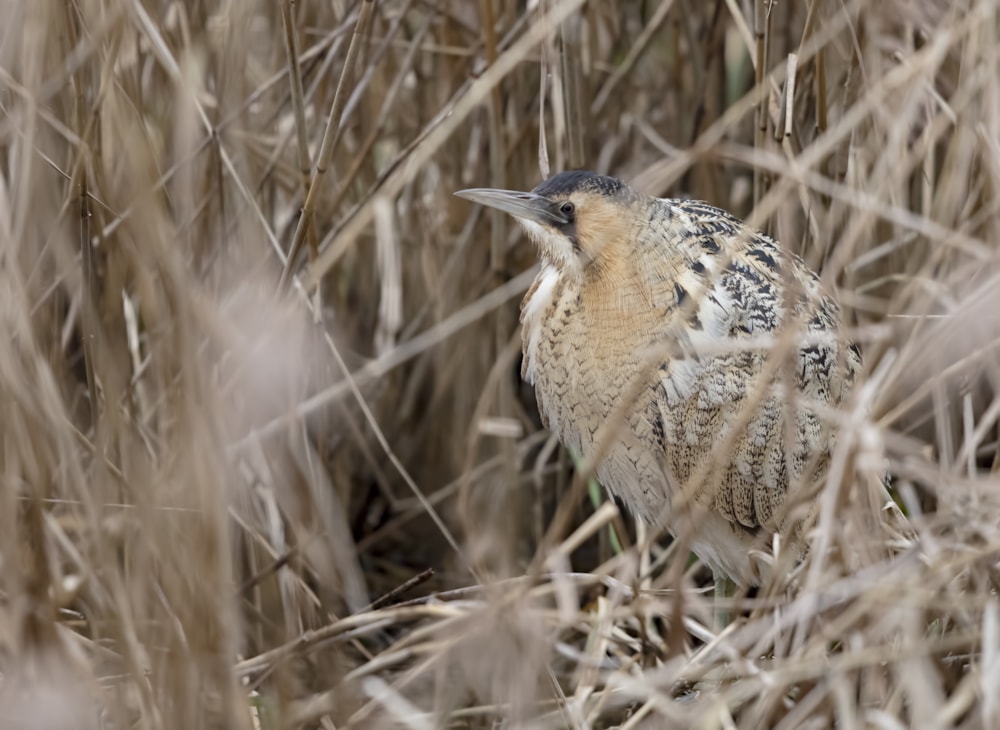British bitterns continue to boom
Eurasian Bittern has enjoyed its best year on British soil since detailed records began, according to the results from an annual RSPB survey.
Despite its claim to fame as Britain's loudest bird, Eurasian Bittern is a cryptic and secretive species. With their well camouflaged, pale, buffy-brown plumage, bitterns spend most of their time hiding in dense stands of reed and are so elusive that scientists use the males' distinctive booming 'song' to assess their population size.

Eurasian Bittern is an elusive species which is only occasionally seen in flight (Geoffrey Dicker).
Since 2006, there has been a year-on-year increase in the number of bitterns in Britain. This continued into 2019, with the population again reaching record levels: 198 males were recorded at 89 sites, compared to 188 at 82 sites in 2018. Of these, 102 booming males were logged at RSPB-owned sites, up from 92 last year. Booming was reported from five new localities across the country and, although the number of confirmed booming males in Somerset dropped from 55 to 48, record levels were noted in the Fens and north-east England.
The species had completely disappeared in Britain by the 1870s, before recolonising early in the 20th century. However, it found itself back on the brink in 1997, when numbers dropped to just 11 males.
Simon Wotton, RSPB Senior Conservation Scientist, said: "Bitterns are one our most charismatic birds. Their astonishing recovery from the brink of extinction is a real conservation success story and example of what is possible through targeted efforts to restore wildlife habitat.
"It's a delight to hear their distinctive booming call echoing across the reedbeds every year as more and more bitterns are making new or restored wetlands their home."
Two EU LIFE-funded projects helped reinvigorate the bittern population, alongside the legal safeguards in place within Special Protection Areas (SPAs). However, the number of SPAs has not increased for 20 years, despite plans to designate more SPAs as bitterns arrived in their newly created habitats.

Eurasian Bittern (Andrew Brown).
When the RSPB first started regular annual bittern monitoring in 1990, over 90 per cent of booming males were found on SPAs designated for the bird, but this year that figure stood at only 23 per cent. This potentially leaves bittern nests vulnerable to damage and destruction. Remarkably, the UK has the second-lowest proportion of its national territory designated as SPAs among the EU28 member states.
The RSPB's conservation director, Martin Harper, commented: "The recovery of bittern is a great success story. It highlights the importance of nature reserves and protected areas in providing this species a lifeline. Equally, we know that dedicated funding from the EU has been instrumental in driving positive action.
"Rhetorical commitments to restore nature in a generation must be backed up with legal targets and adequate resources. That is why it is essential that governments across the UK pass new environment laws to drive nature's recovery and replace the funding that will be lost if and when the UK leaves the European Union."

